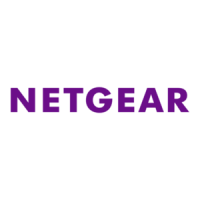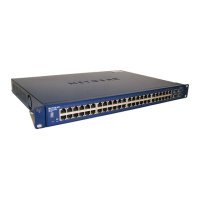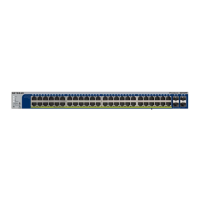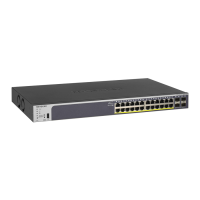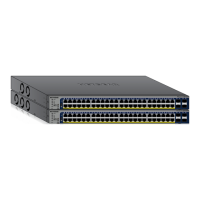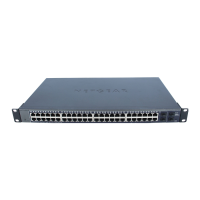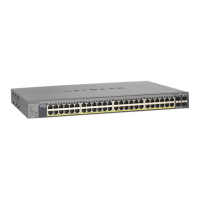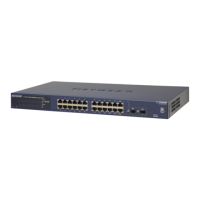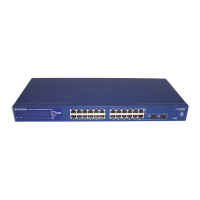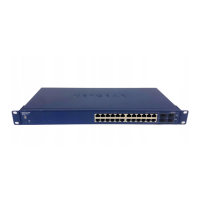152
GS716T and GS724T Gigabit Smart Switches
From the Class of Service link under the QoS tab, you can access the following pages:
• Basic CoS Configuration on page 152
• CoS Interface Configuration on page 153
• Interface Queue Configuration on page 155
• 802.1p to Queue Mapping on page 156
• DSCP to Queue Mapping on page 158
Basic CoS Configuration
Use the Trust Mode Configuration page to set the class of service trust mode of an interface.
Each port in the switch can be configured to trust one of the packet fields (802.1p or IP
DSCP), or to not trust any packet’s priority designation (untrusted mode). If the port is set to a
trusted mode, it uses a mapping table appropriate for the trusted field being used. This
mapping table indicates the CoS queue to which the packet should be forwarded on the
appropriate egress port(s). Of course, the trusted field must exist in the packet for the
mapping table to be of any use, so there are default actions performed when this is not the
case. These actions involve directing the packet to a specific CoS level configured for the
ingress port as a whole, based on the existing port default priority as mapped to a traffic class
by the current 802.1p mapping table.
Alternatively, when a port is configured as untrusted, it does not trust any incoming packet
priority designation and uses the port default priority value instead. All packets arriving at the
ingress of an untrusted port are directed to a specific CoS queue on the appropriate egress
port(s), in accordance with the configured default priority of the ingress port. This process is
also used for cases where a trusted port mapping is unable to be honored, such as when a
non-IP packet arrives at a port configured to trust the IP DSCP value.
To display the Basic CoS Configuration page, click QoS
Basic CoS Configuration.
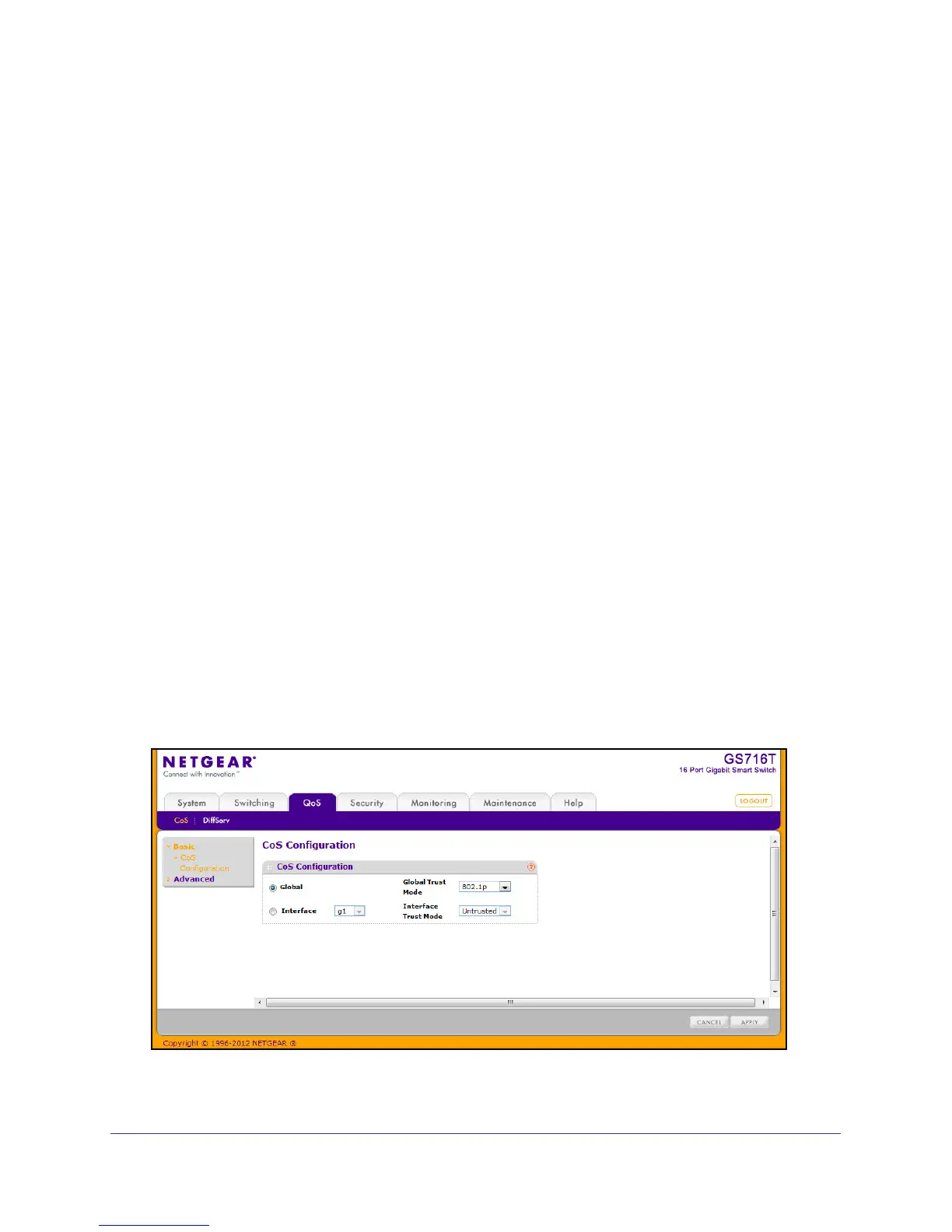